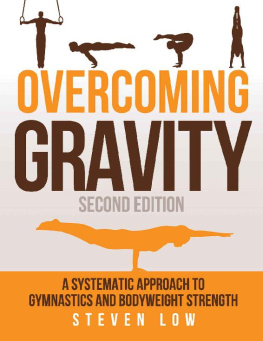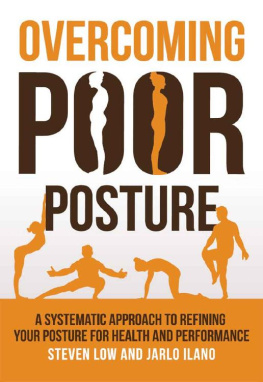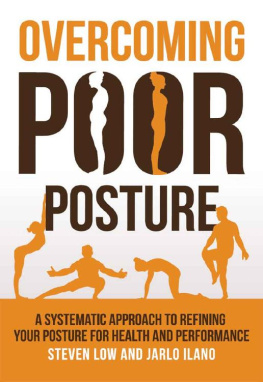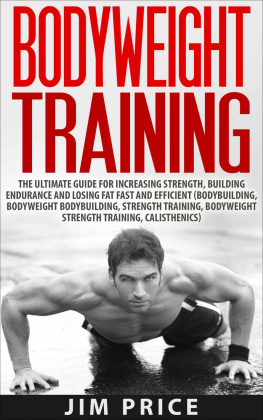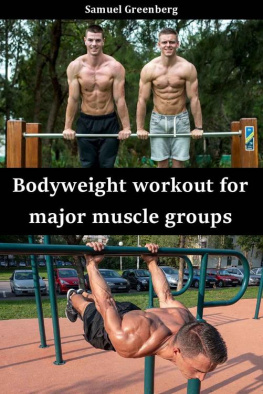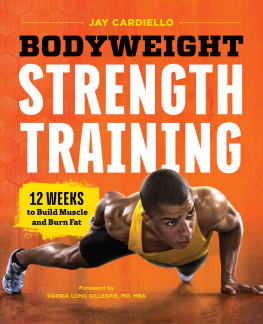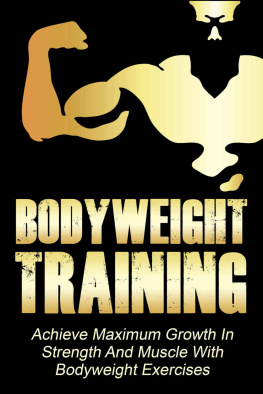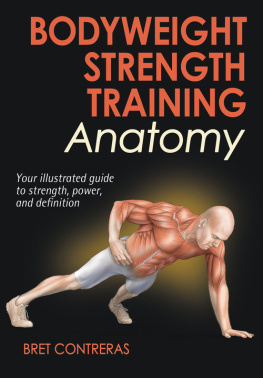
Overcoming Gravity: A Systematic Approach to Gymnastics and Bodyweight Strength
Second Edition
Copyright 2016 by Steven Low
All rights reserved.
Supervising Editor: Jared Stump
Associate Editor: M.M. DeVoe
Additional Editing: Christopher Matthias
Cover Concept: Sigur Ros
Additional Cover Design: Kathrine Tripp and Katherine Lloyd
Interior Design and Typeset: Katherine Lloyd
Illustrations: Ryan Cousins, Mike Kash, and Seiji Tanaka
One-Arm Handstand Section of Chapter 24: Yuri Marmerstein
Published in Houston, Texas, by Battle Ground Creative
Battle Ground Creative is a publishing company with an emphasis on helping first-time authors find their voice. Named after an obscure city in Washington State, we currently operate offices in Houston, Texas and Princeton, New Jersey. For a complete title list and bulk order information, please visit www.battlegroundcreative.com
The websites and references listed in this book are intended to serve as a resource, with no guarantee expressed or implied as to the accuracy of their content.
ISBN-10: 0-9908738-5-4
ISBN-13: 978-0-9908738-5-3
HEATH & FITNESS / Exercise
Printed in the United States of America
DISCLAIMER
By using Overcoming Gravity: A Systematic Approach to Gymnastics and Bodyweight Strength (hereafter referred to as the book), you (hereafter referred to as the user), signify your agreement to the following terms and conditions. If you do not agree to the terms and conditions outlined on this page, do not use this book!
The users usage of any and all content provided within the book is at the users own risk. This includes suggested workouts, exercise routines, nutritional information, and all other information.
In no case shall the author, illustrators, editors, publisher, suppliers, or any other third party referenced be liable for any damages (both now and in the future) including, but not limited to: physical injuries to any part of the body or multiple parts of the body, non-physical damages such as emotional pain and financial loss, muscle strains or tears, illness and disease, heart attack, death; however caused, occurring during or after the users altering of their habits, actions, diet, exercise, and/or lifestyle based upon usage of the content provided by the book.
Material contained in the book is for educational purposes only. The author, publisher, and other agents of the book assume no responsibility for any aspect of healthcare administered with the aid of content obtained from the book.
User understands that any and all advice and suggested programs pertaining to exercise and fitness should be performed after consulting with the appropriate medical professionals, under the guidance of a qualified trainer.
User understands nutritional advice is not intended as a substitute for professional medical advice, diagnosis, and/or treatment, and has been advised to seek medical advice from a physician before altering a diet or beginning an exercise program.
CONTENTS
INTRODUCTION
I never imagined that The Fundamentals of Bodyweight Strength Training, the article I wrote for Eat. Move. Improve. in March of 2010 would become so popular. After publishing my first book, Overcoming Gravity: A Systematic Approach to Gymnastics and Bodyweight Strength in November of 2011, I was overwhelmed by how much support it received. I knew I had to release a second edition, because the first edition did not fully accomplish what I had set out to accomplish. My primary goal for the first edition was to create a comprehensive resource for beginners to learn how the human body works, and to aid the reader as they construct their own workout routines. You have certainly heard the axiom Give a man a fish and feed him for a day; teach a man to fish and feed him for a lifetime. I wanted to build the information base to feed the aspiring athlete for a lifetime. As is often the way with a work, once published, use of the book brought about many helpful questions. I published several articles on Eat. Move. Improve. to clarify content from the book. This editionnot unlike strength trainingis built on examination of the successes and the aspects in need of focused work.
Since the release of the first edition, I have learned a lot about simplicity and teaching methods. I hope this second edition will guide you toward learning all you need to meet your own goals.
Mastering your body requires a lot of hard work and persistence, but the potential for overall results is astounding. Bodyweight exercises can be performed almost anywhere with minimal equipment, are fun to play around with, and it doesnt hurt that they can be visually impressive. Strength levels acquired from proper bodyweight training transfers over to all other forms of strength, including weight training. Bodyweight strength training is thus extremely rewarding.
Nothing worthwhile comes without hard work and a fair share of frustration. Bodyweight strength training is no exception. Unlike with barbells there are very few gauges for progress. Athletes may become stuck on certain strength progressions for weeks or even months at a time with little clue how to push beyond plateaus. Stagnation is a very real problem, but with good programming we can fight this tendency. Programming is all about planning, and a good plan will help minimize the plateaus and keep us moving to our individual pinnacle.
Strength and conditioning has been constantly refined and modified in most of the major sports such as track and field, football, basketball, swimming, and many others. However, there are few people who know how to effectively implement progressions and programming in the context of bodyweight strength. Gymnastics gyms simply do not have the monetary resources or consumer demand to hire strength and conditioning professionals to help refine the physical preparation that is required. Likewise, there are no requirements for coaches to know much about strength and conditioning. Thus, there are limited sources of true bodyweight strength programming available. Most of the information is in the heads of high-level gymnastics coaches who do not have the time or inclination to record their expertise. Similarly, knowing progressions for exercises alone does not necessarily mean that one has enough knowledge to implement effective programming. One such consideration is the importance of populations. The way you train a gymnast will not be the way you train a recreational adult interested in the same material.
Overcoming Gravity is an attempt to change that. The primary goal of this book is to allow beginner and intermediate athletes to delve into the world of bodyweight strength training and progress effectively and safely. This book will equip you with the knowledge to build safe and effective workouts and progress in your bodyweight strength movements. Additionally, there will be condensed exploration on subjects that relate to general movement such as endurance, metabolic conditioning, cardio, nutrition, and the like, to add support and stability to the programming and subsequent training.
To equip you with the right tools, I have distilled it in what I call the fundamental knowledge base. If you are a personal trainer or a coach this book will serve as a good knowledge base for working with your clients.
Fundamental Knowledge Base
The purpose of the fundamental knowledge base is threefold:
To provide general training knowledge.
Next page
